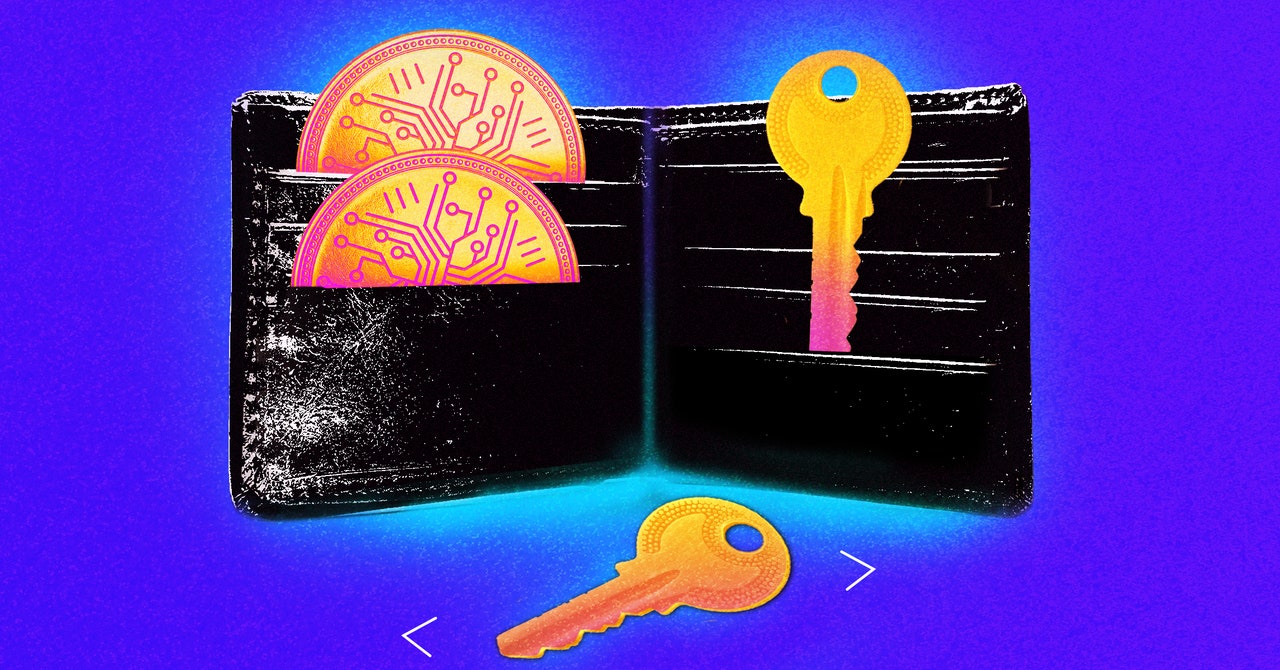But with more crypto investors turning to self-custody, both software and hardware wallet makers are looking to make their products more accessible and make the process less risky.
This week, Ledger is launching a new service called Ledger Recover that splits a wallet recovery phrase — basically a human-readable form of the private key — into three encrypted shards and distributes them to three custodians: Ledger, crypto custodian Coincover, and code escrow company EscrowTech . If someone loses their recovery phrase, two of the three shards can be combined – pending an ID check – to regain access to the locked funds. Essentially, Ledger Recover is an extra safety net; for the price of $9.99 per month, it takes the danger out of crypto’s version of cramming dollars under the mattress. It will be available in the UK, EU, US and Canada and will be coming to other territories later in the year.
Gaultier says he sees user-friendly, low-risk self-custody as a milestone in the development of the crypto industry — a necessary concession to convenience on the road to mass adoption. “A lot of people say they can’t enter crypto because they can’t manage the recovery phrase. Are the industry problem,” he says. “Making that pain point go away means a lot more people will join the space.”
Ledger’s main competitor in the hardware market, Trezor, has its own solution called Shamir Backup. The tool allows users to split their recovery phrase into as many as 16 shards that can be distributed to trusted individuals or stashed in secret locations, and to specify the number of shards required to recover their wallets. It’s also free for owners of Trezor’s most advanced device. Josef Tětek, bitcoin analyst at Trezor, says he hopes more people will use Shamir Backup as crypto literacy improves. But the first step, he says, is to make it clear to newcomers that personal responsibility is an entry fee if they want instant ownership of their money — described in crypto circles as financial sovereignty. “If you want to claim financial sovereignty, you have to be in charge,” he says. “We shout that to the user every step of the way.”
Not all self-preservation requires hardware. The team behind MetaMask, a popular software self-custody wallet for the Ethereum blockchain, has set its sights on an ambitious technical solution. The risks of dealing with a recovery phrase are so strange, says Simon Morris, chief strategy officer at ConsenSys, MetaMask’s parent company, that “it’s like teaching people how to drive, but in an F1 car.” It’s too much, too fast. So to bridge the gap, the team is pushing for a new technical standard for Ethereum that would create a new variant of self-custody – account abstraction, in the jargon – that is something of a halfway house. It’s a “major undertaking,” admits Morris.
But Gauthier argues that “geeky” approaches don’t fit; self-preservation should become simpler and more user-friendly. “The industry started with the geeks. But when the industry is ready to evolve and move to the mass market, you can’t lead with technology. You have to lead with a product,” he says.
Ledger Recover is a service, he says, not a function – a service that offers all the benefits and safety mechanisms that ordinary people look for. The fragments of the recovery phase are encrypted and stored on specially secured servers by each custodian, and the balance of the user’s wallet is covered up to a value of €50,000 ($55,000) if something goes wrong, a bit like deposit insurance with a Bank . It is also being designed with a less technical user in mind.
The company’s chief experience officer, Ian Rogers, is an Apple alumnus and friend of Tony Fadell, creator of the iPod, who helped Ledger develop his latest wallet. Rogers says he wants to combine an Apple-like UX philosophy with additional services that make crypto less scary for a non-technical audience. In his approach to solving the major headache of self-preservation, Rogers explains, Ledger reads from Steve Jobs’s book and works backwards from the end goal—mass adoption of self-preservation wallets—to identify the necessary steps to get there . “We have a hill to climb in terms of ease of use,” says Rogers. “But not everyone got the first version of the iPod on day one.”

